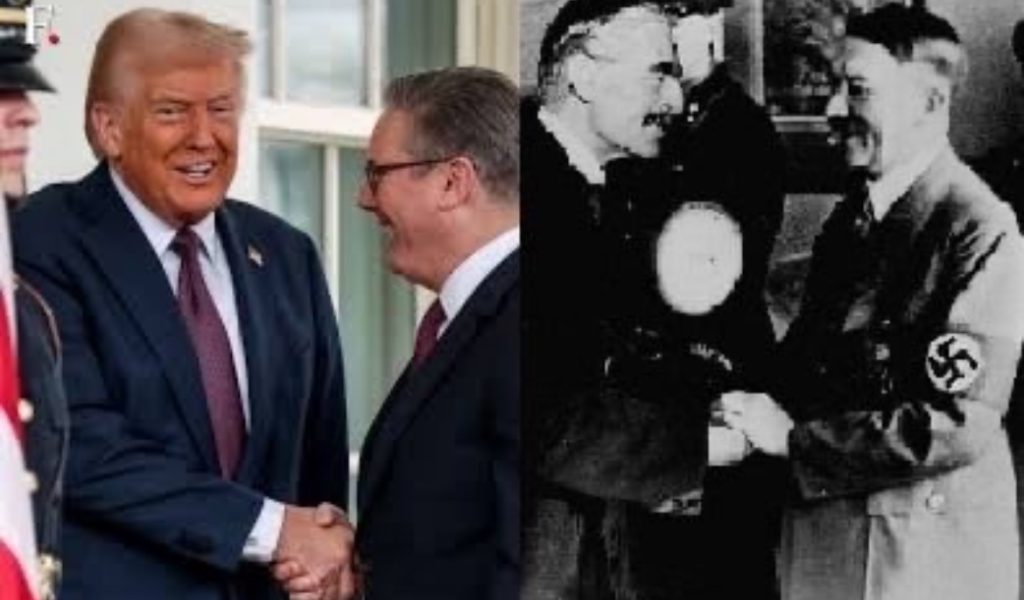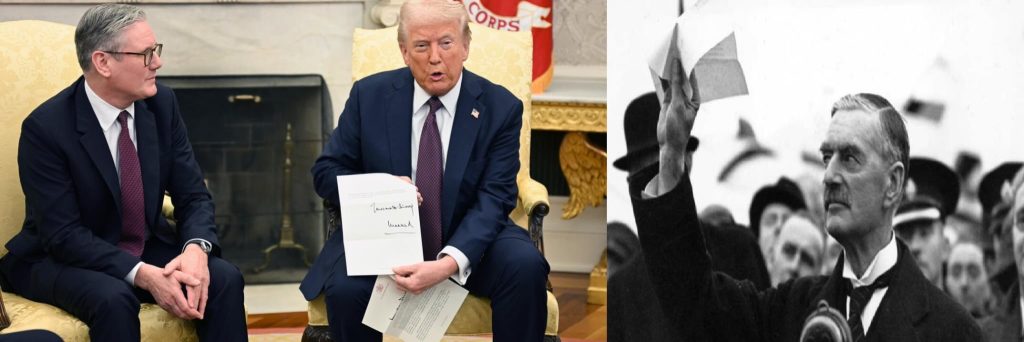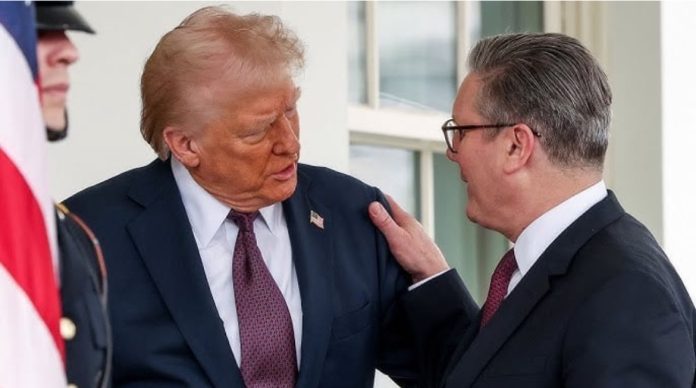In the autumn of 1938, British Prime Minister Neville Chamberlain embarked on a series of diplomatic missions that would come to define his legacy and shape the course of 20th-century history. His meetings with Adolf Hitler, the Chancellor of Nazi Germany, were aimed at averting war and securing peace in Europe. However, the outcomes of these meetings remain a subject of intense debate among historians and political analysts.
The Context of the Meeting
By the late 1930s, Europe was teetering on the brink of conflict. Hitler’s aggressive expansionist policies, particularly his demands for the annexation of the Sudetenland, a region of Czechoslovakia with a significant ethnic German population, had heightened tensions across the continent. Chamberlain, who had become Prime Minister in May 1937, was determined to pursue a policy of appeasement, believing that diplomatic negotiations could prevent another devastating war, just two decades after the horrors of the First World War.
The Meetings at Berchtesgaden, Bad Godesberg, and Munich
Chamberlain’s first meeting with Hitler took place on 15 September 1938 at Berchtesgaden, the Führer’s mountain retreat in Bavaria. During this encounter, Hitler demanded the incorporation of the Sudetenland into Germany, claiming it was necessary to protect the rights of ethnic Germans. Chamberlain, though initially taken aback by Hitler’s uncompromising stance, returned to Britain to consult with his Cabinet and the French government. They agreed to support the transfer of the Sudetenland to Germany, provided it was done peacefully and with international oversight.
A second meeting followed on 22 September in Bad Godesberg, where Chamberlain presented the agreed terms. However, Hitler escalated his demands, insisting on immediate military occupation of the Sudetenland and threatening war if his conditions were not met. Chamberlain, frustrated but still committed to peace, continued negotiations.
The final and most infamous meeting took place in Munich on 29-30 September 1938. Here, Chamberlain, along with French Prime Minister Édouard Daladier, Italian leader Benito Mussolini, and Hitler, signed the Munich Agreement. This pact granted Germany control over the Sudetenland in exchange for Hitler’s assurance that he had no further territorial ambitions in Europe. Upon his return to Britain, Chamberlain famously waved a piece of paper signed by Hitler, declaring it represented “peace for our time.”
The Aftermath and Legacy
Initially, Chamberlain was hailed as a hero for securing peace. The British public, weary of war, celebrated the Munich Agreement as a triumph of diplomacy. However, this optimism was short-lived. In March 1939, Hitler violated the agreement by occupying the rest of Czechoslovakia, exposing the futility of appeasement. Chamberlain’s policy was widely criticised, and his reputation suffered irreparable damage.
When Germany invaded Poland in September 1939, triggering the Second World War, Chamberlain’s efforts to avoid conflict were seen as a failure. He resigned as Prime Minister in May 1940, succeeded by Winston Churchill, who led Britain through the war with a far more resolute stance against Nazi aggression.
Historical Perspectives
Historians have long debated Chamberlain’s actions. Some argue that his policy of appeasement bought Britain valuable time to rearm and prepare for war. Others contend that it emboldened Hitler, allowing him to consolidate power and pursue his expansionist goals unchecked. Chamberlain’s meetings with Hitler remain a poignant reminder of the complexities of diplomacy and the challenges of negotiating with authoritarian regimes.
In retrospect, Neville Chamberlain’s meetings with Hitler were a pivotal moment in history, illustrating both the potential and the limitations of diplomacy in the face of tyranny. While his intentions were rooted in a desire for peace, the ultimate failure of appeasement serves as a cautionary tale about the dangers of underestimating aggressive adversaries.
Comparing Hitler, Trump, Chamberlain and Starmer

The comparison between Sir Keir Starmer and Neville Chamberlain, as well as Donald Trump and Adolf Hitler, is a provocative one, but it can be framed in terms of leadership styles, diplomatic approaches, and the broader historical and political contexts in which they operated. While the parallels are not exact—and it is important to avoid oversimplifying complex historical figures—there are some instructive similarities and contrasts worth exploring.
Sir Keir Starmer and Neville Chamberlain: The Diplomats Seeking Peace
- Desire for Stability and Peace:
- Chamberlain: As Prime Minister in the late 1930s, Chamberlain was deeply committed to avoiding another devastating war. His policy of appeasement was rooted in the belief that diplomatic negotiations and concessions could satisfy Hitler’s demands and maintain European stability. Chamberlain’s famous declaration of “peace for our time” reflected his genuine hope that the Munich Agreement had averted conflict.
- Starmer: In this hypothetical scenario, Starmer is portrayed as a leader seeking to broker peace in Ukraine, working with Trump to secure a lasting deal. Like Chamberlain, Starmer appears motivated by a desire to stabilise a volatile situation and prevent further escalation. His praise for Trump’s role in “changing the conversation” on Ukraine suggests a willingness to engage in diplomacy, even with unpredictable partners, to achieve peace.
- Trust in Diplomacy and Negotiation:
- Chamberlain: Chamberlain placed significant faith in the power of face-to-face diplomacy, believing that personal engagement with Hitler could resolve tensions. His meetings at Berchtesgaden, Bad Godesberg, and Munich were emblematic of this approach.
- Starmer: Similarly, Starmer’s willingness to meet Trump in the Oval Office and discuss sensitive issues like the Ukraine war and trade reflects a belief in the value of direct dialogue. His emphasis on creating an “enduring” and “historic” peace deal suggests a Chamberlain-esque optimism about the potential of diplomacy to resolve conflicts.
- Risk of Misjudging Adversaries:
- Chamberlain: One of Chamberlain’s greatest failures was his misjudgment of Hitler’s intentions. By believing that Hitler could be appeased, Chamberlain underestimated the Führer’s expansionist ambitions, leading to the eventual collapse of the Munich Agreement.
- Starmer: Again in this hypothetical scenario, Starmer’s engagement with Trump carries a similar risk. Trump’s unpredictable nature and past statements—such as calling Zelenskyy a “dictator” or expressing admiration for Putin—raise questions about whether Starmer might be misjudging Trump’s reliability as a partner in securing peace. The potential for Trump to prioritise personal deals over long-term stability echoes the dangers Chamberlain faced in trusting Hitler.
Donald Trump and Adolf Hitler: The Unpredictable Strongmen
- Authoritarian Tendencies and Populist Appeal:
- Hitler: As the leader of Nazi Germany, Hitler was a charismatic but ruthless authoritarian who exploited populist sentiment to consolidate power. His aggressive expansionist policies, such as the annexation of the Sudetenland and the invasion of Poland, were driven by a vision of German dominance.
- Trump: While Trump is not comparable to Hitler in terms of ideology or actions, his leadership style shares some authoritarian and populist traits. Trump’s “America First” rhetoric, his disdain for traditional diplomatic norms, and his willingness to bypass allies in favour of direct deals with adversarial leaders (such as Putin) reflect a similar preference for unilateralism and personal diplomacy.
- Exploitation of Weaknesses in the International Order:
- Hitler: Hitler capitalised on the weaknesses of the post-World War I international order, including the reluctance of Britain and France to confront German aggression. His incremental demands—starting with the Sudetenland—were designed to test the resolve of his adversaries.
- Trump: In this hypothetical scenario, Trump’s approach to Ukraine and Russia suggests a willingness to exploit divisions within the international community. His cryptic statements about security guarantees and his apparent trust in Putin’s reliability could undermine efforts to present a united front against Russian aggression, much as Hitler’s tactics divided and weakened his opponents.
- Unpredictability and Opportunism:
- Hitler: Hitler’s diplomacy was marked by unpredictability and opportunism. His sudden escalation of demands at Bad Godesberg and his violation of the Munich Agreement demonstrated a willingness to exploit any perceived weakness.
- Trump: Trump’s hypothetical diplomacy in the scenario is similarly unpredictable. His shifting statements—such as questioning whether he called Zelenskyy a “dictator”—and his willingness to engage directly with Putin without consulting allies reflect an opportunistic approach to diplomacy. This unpredictability creates uncertainty and risks undermining the stability that Starmer seeks to achieve.

Key Differences and Contextual Nuances
While the comparisons are instructive, it is important to acknowledge the significant differences between these figures and their historical contexts:
- Hitler’s Ideology and Actions: Hitler’s regime was responsible for genocide and unparalleled destruction, making any comparison to modern leaders inherently limited. Trump, while controversial, does not share Hitler’s ideological extremism or commit atrocities.
- Chamberlain’s Historical Moment: Chamberlain operated in a pre-nuclear world where the stakes of global conflict were unimaginably high. Starmer, in contrast, operates in a more interconnected and diplomatically complex world, where the tools for conflict resolution are more varied.
- Starmer’s Multilateralism: Unlike Chamberlain, who pursued a largely unilateral approach to appeasement, Starmer appears to recognise the importance of working with allies, as evidenced by his emphasis on a US “backstop” for Ukraine.
In summary, the comparison between Starmer and Chamberlain, as well as Trump and Hitler, highlights the enduring challenges of diplomacy in the face of unpredictable and adversarial leaders. Starmer’s Chamberlain-esque optimism about securing peace through dialogue is commendable, but it carries the risk of misjudging Trump’s intentions and reliability. Similarly, Trump’s Hitler-like unpredictability and willingness to exploit divisions in the international order underscore the dangers of engaging with leaders who prioritise personal deals over long-term stability.
Ultimately, the lessons of Chamberlain’s appeasement policy serve as a cautionary tale for modern leaders like Starmer: while diplomacy is essential, it must be grounded in a realistic assessment of an adversary’s intentions and a willingness to enforce red lines when necessary. This hypothetical scenario suggests that Starmer’s success will depend on his ability to navigate these complexities without repeating the mistakes of the past. Hitler was and Trump is a narcissist who fed/feed off hate and division. Trusting these traits to deliver peace and unity is a fools errand.







